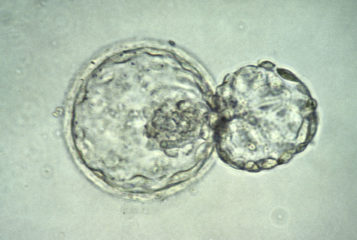Lasers have been used to activate stem cells to repair and regrow damaged teeth in mice.
Although it is very early days for the technology, the scientists behind the study say they hope it could one day replace relatively painful dental operations such as root canal treatments.
Dr David Mooney, of Harvard University's Wyss Institute, who led the study, said: 'It would be a substantial advance in the field if we can regenerate teeth rather than replace them'.
The stem cells were used to regenerate dentin, the bone-like substance that surrounds the pulp, the soft middle part of the tooth containing the nerve, blood supply and connective tissue. In root canal treatment, dental cement is used to trigger new dentin formation, but that approach is not always successful.
Dr Praveen Arany, now based at the National Institutes of Health, one of the study's authors, told the BBC: 'The laser tool and the mechanism we have outlined would ideally be used in pulp capping that would prevent root canal treatment and hopefully preserve the tooth without the need for it to be eventually extracted'.
The experiments to test the technology were performed on human stem cells in the laboratory and in rats and mice.
In the rodent studies, researchers drilled holes in the animals' molars to access the tooth pulp that contains adult dental stem cells. The rodents were given low-dose laser treatments, had temporary caps applied, and then kept comfortable and healthy.
After 12 weeks, the researchers confirmed enhanced dentin formation. They say the regrown dentin was 'strikingly similar in composition to normal dentin, but did have slightly different morphological organisation'. The scientists put these differences down to the 'technical challenges' that come with performing the procedure in very small animals.
Previous research into regenerative medicine for use in dentistry has focused on growing teeth in the lab (reported in BioNews 616, 697 and 716).
However, this technique, Dr Mooney says, 'does not introduce anything new to the body, and lasers are routinely used in medicine and dentistry'. As a result, he says, 'the barriers to clinical translation are low'.
Dr Dusko Ilic, senior lecturer in stem cell science at King's College London, who was not involved in the study, said: 'The approach seems to be pretty straightforward and although it sounds high tech, the technology is not prohibitively expensive. Quite contrary, it is low cost. Since in teeth this process appears to enhance healing, I would expect to see clinical trials in humans very soon'.
Analysis from NHS Choices is more reserved. 'Even if the research progresses well', it concludes, 'it would probably be at least a decade before any application for humans becomes available'.
Sources and References
-
Forget the dentist's drill, use lasers to heal teeth
-
Lasers used to regenerate damaged teeth
-
Lasers 'could prevent' need for root canal treatment
-
Photoactivation of Endogenous Latent Transforming Growth Factor—β1 Directs Dental Stem Cell Differentiation for Regeneration
-
Researchers use light to coax stem cells to repair teeth




Leave a Reply
You must be logged in to post a comment.